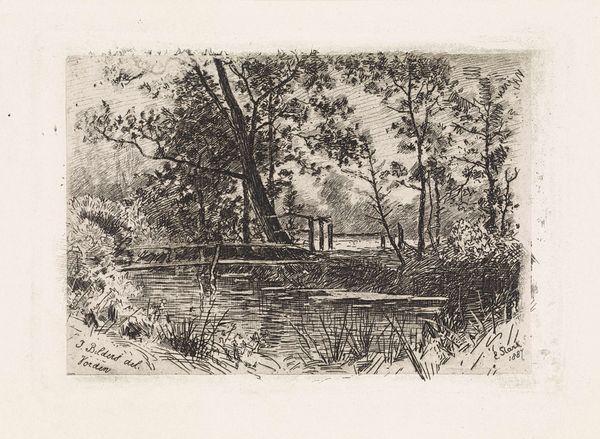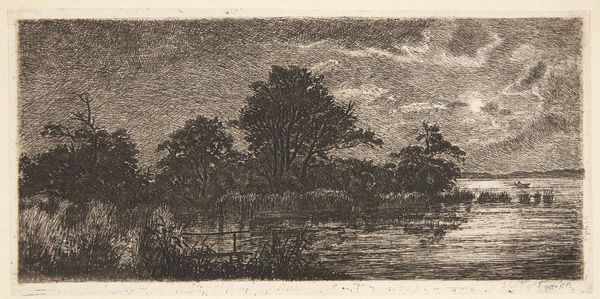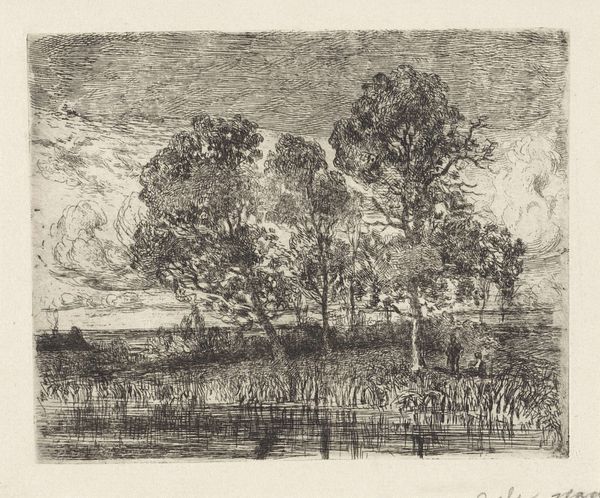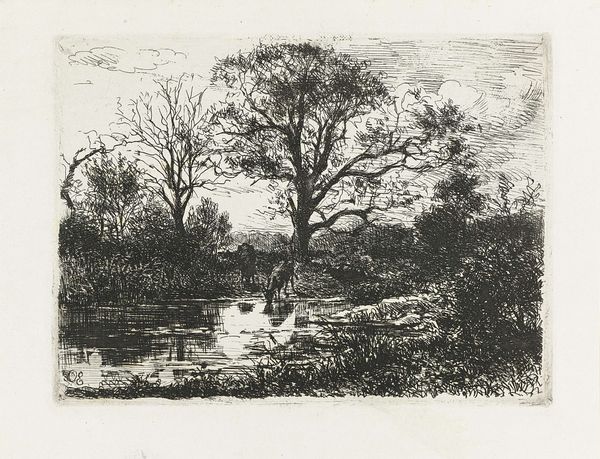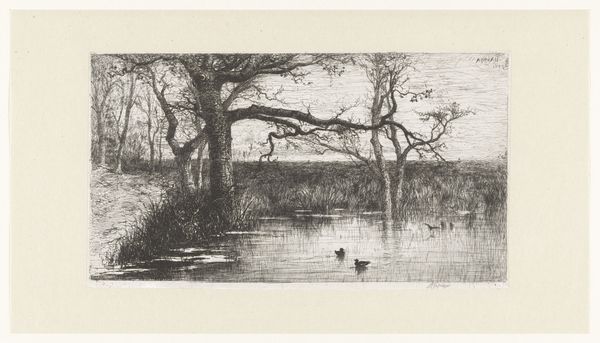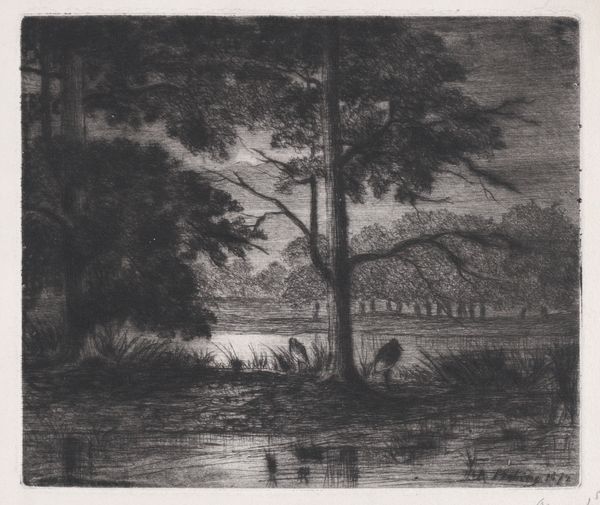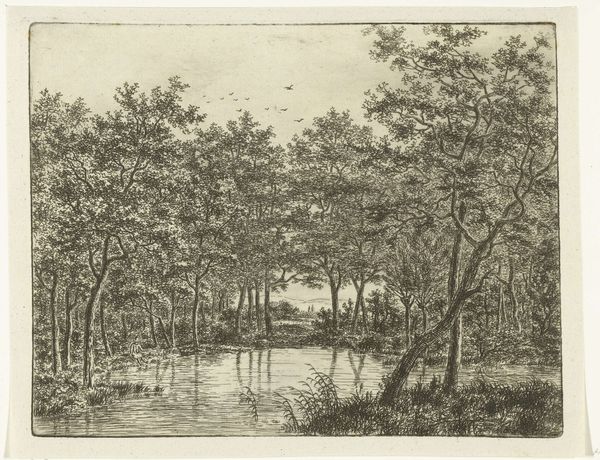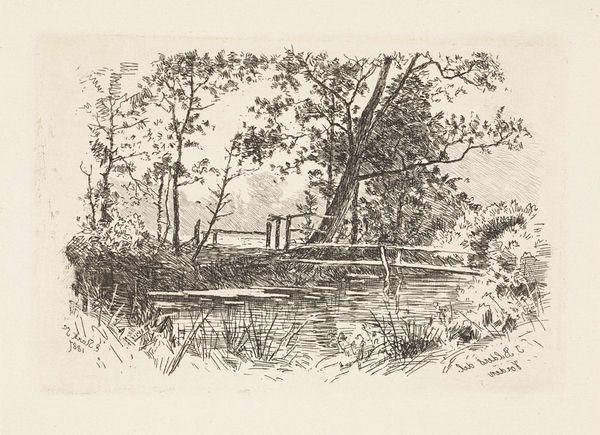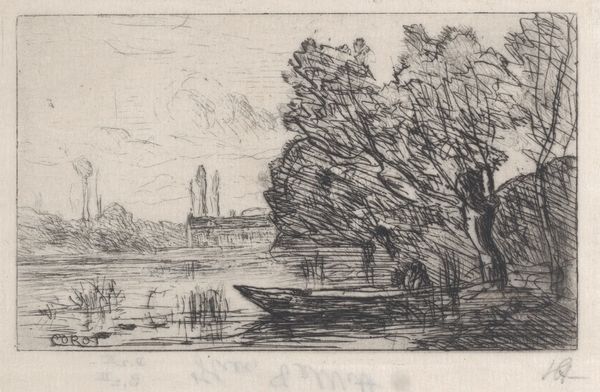
Dimensions: height 100 mm, width 155 mm
Copyright: Rijks Museum: Open Domain
Curator: At first glance, there’s something deeply comforting about this work. The interplay of light and shadow creates a peaceful atmosphere. Editor: Indeed. Let's delve into Elias Stark's "Landscape with Tree and Bridge," crafted in 1886. Stark, though not widely known today, was an intriguing figure whose work reveals the artistic currents of his time. The Rijksmuseum holds this etching in its collection, a testament to its enduring appeal. Curator: The linear precision is remarkable; it gives the composition a layered quality. Stark really focused on the relationships between shapes to create something dynamic out of a traditional pastoral subject. Editor: Consider how artistic training at that time—the Dutch landscape tradition combined with burgeoning Realist principles—shaped Stark's vision. This wasn't just about representing the scene; it reflected a changing social and cultural view of nature, of seeking authenticity in the landscape. He was certainly outdoors when he worked on this image. The composition offers a very contemporary sense of freedom in relation to the classical masters. Curator: Absolutely, the bridge becomes more than just a physical structure; it's symbolic of a threshold, a crossing from one state to another. I also find myself focusing on the contrast of the reflections in the water, creating an almost eerie calm below that juxtaposes against the rough textures surrounding the bridge itself. Editor: Stark's choice of etching provides him with great precision to convey detail in his landscape depictions; note also his application of Romantic ideals, that powerful connection to nature combined with close visual detail to evoke emotion in the viewer. How this resonated with collectors at the time. There's a social element, a yearning to depict the common man's connection with the world outside the art establishment. Curator: Yes, in its lines and use of perspective, one appreciates the artwork’s deceptive complexity—I'm struck that the seemingly basic approach has provided so much depth. Editor: So, while seemingly a modest work on first impression, it shows to viewers of today how nineteenth century artwork acted as a marker for later movements which expanded access to the medium and allowed viewers to access art outside formal academic settings.
Comments
No comments
Be the first to comment and join the conversation on the ultimate creative platform.

